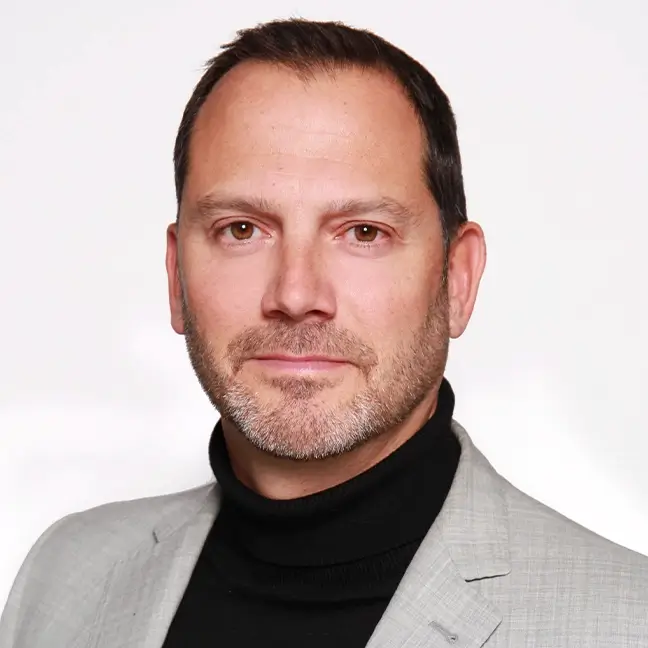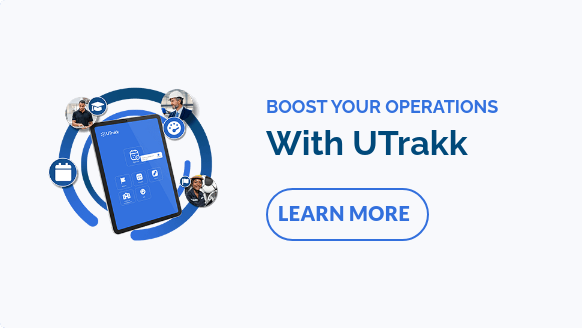What is Industry 5.0?
Industry 5.0 is a human-centric industrial revolution. It is the next phase of the fourth industrial revolution, which we've seen in the last decade or so. This evolution supports human creativity and promotes mechanized efficiency, creating an ecosystem where people and machines can work together more effectively to solve problems faster than ever.
In 2020, the CODIV-19 pandemic swept around the globe.The resulting economic turbulence created an environment ripe for Industry 5.0 to take root and grow stronger than ever. While Industry 4.0 had already established a base in manufacturing, logistics, and supply chain management by implementing smart machines that make decisions based on real-time data, Industry 5.0 is now getting more traction worldwide. It has an impact on every industry, every company, every department.
A new phase of the industrial revolution
Industry 5.0 is changing how we work, live, play, and learn. It brings the principles of Industry 4.0 a step further into automation, connected devices, AI systems, robotics, and human-machine collaboration.
The driving factor of Industry 4.0 was the digitalization of information, which allowed people to access and share data in new ways. Industry 5.0 is the next step in this evolution, where we see an exponential increase in connectivity between people, machines, and data that unlocks previously untapped value.
How is Industry 5.0 revolutionizing business strategies?
Combining human and technology
The fifth industrial revolution is about elevating the digital transformation of businesses with the combination of skilled workers with technology, so that they collaborate more meaningfully and efficiently in a safe environment.
Essentially, it is about bringing a human touch to key technologies through new tools like 3D printing, collaborative robots (cobots), smart systems, AI/ML, digital twins, blockchain, etc.
This revolution is not just a matter of technology. It's about harnessing the power of human beings and machines to create new opportunities, unlock value and drive growth.
It means building a culture that supports innovation, experimentation, and creativity while ethically harnessing automation. As a result, many organizations are beginning to invest in high-performance human-machine partnerships that enable higher levels of automation across their business operations.
Investing in employee development
We have seen many jobs automated by industrial robots or artificial intelligence. However, rather than people losing jobs, many jobs are and will be created, requiring people with new skills. For example, in The Future of Jobs Report 2020, the World Economic Forum predicts that industrial automation will displace about 85 million workers but create 97 million new jobs by 2025 across 26 countries. This means that it is essential for companies to invest in their employees' education and training if they are to embrace (and benefit from) this new cycle.
Industry 5.0 is not only about automation and collaborative robots but also about creating new jobs and ensuring that people remain at the center of the production process.
Honing in on employee engagement
Industry 5.0 offers many opportunities for companies to improve their competitiveness, increase productivity, and reduce costs while respecting people's rights – the European Union calls this industrial revolution “people-centric” and is committed to ensuring people are not neglected.
Companies that apply the principles of Industry 5.0 acknowledge that people are their biggest asset. Afterall, they hold knowledge, expertise, and ideas. They create solutions and make them happen, build things from scratch, and innovate as individuals, teams, or groups. Organizations that implement employee engagement strategies are more likely to retain valuable employees and attract new talents, propelling growth.
The 3 pillars of Industry 5.0
Industry 5.0 is founded on 3 pillars:
Human-centric approach
People are at the center of processes and decision making. They have a say in how things work, define the processes to do their job, understand what is happening is the business. They are not mere cogs in a machine but rather part of an extensive system. Human-centricity is the first pillar that defines Industry 5.0, a manufacturing process through which technology enables society to serve people's needs better and be more human.
It moves away from the Industrial Revolution where people were mere cogs in a machine. People were removed from the process and considered expendable commodities. In contrast, the human element is fundamental to Industry 5.0: it is about understanding how the human mind works before designing systems for people to use.
Resilience
The ability to quickly adapt to change is critical for Industry 5.0 companies who want to stay competitive in an ever-changing world (new technology, shifting market needs, etc.).
Industry 5.0 companies must rapidly shift their focus to stay ahead of the curve and adapt to market changes. This is where resilience comes in. It is about being able to bounce back from failure, learn from mistakes, and move forward with a positive mindset despite setbacks. The ability to stay positive in the face of adversity can be a powerful asset for companies who want to increase their chances of success in today's volatile business landscape.
Resilience is also about ensuring that businesses have the right infrastructure to continue operating at a high level even if natural disasters or other crises occur. It works well with sustainability (Industry 5.0’s third pillar) because it helps companies to stay on track with their objectives.
Sustainability
Enabling workers to develop new skills means that companies can reduce costs while still providing quality products and services to their customers.
It also means that employees are more likely to stay with their employer because being given new opportunities for learning and growth in their careers will make them feel recognized and valued.
Employers who invest in their employees' lifelong learning are more likely to see higher levels of engagement, productivity, and profitability. This is obviously good for companies but also for the society as a whole: a stronger workforce leads to stronger communities with more opportunities for everyone.
Sustainability is also about implementing circular processes that enable the reuse, repurposing, and recycling of natural resources, reducing waste and environmental damage, optimizing energy management, and increasing the efficiency of manufacturing processes. It is about ensuring a better world for future generations. And that is why companies must invest in people and processes that provide a more sustainable future.
Companies should also reconsider how they measure success to align themselves with the values of society at large. They need new key performance indicators that measure human well-being and environmental impact to create a more sustainable future.
A new approach to management in Industry 5.0
The new generation of management focuses on developing and empowering the workforce to take ownership of organizational goals and create a culture of open communication that encourages employees to share their ideas, collaborate, and work with partners outside the organization (including customers).
It also uses Big Data analytics tools to gain insights into customer needs, preferences, and behaviors so companies can deliver higher-quality products and services, faster.
Frontline managers play a crucial role in Industry 5.0 by providing the leadership and guidance needed to successfully implement the new technologies and processes required to deliver value to customers. The role of managers will shift from focusing on efficiency, control, and compliance to empowering employees, promoting innovation, and facilitating collaboration.
Industry 5.0 is also about how people work together as a team. This requires a different approach to leadership and management that moves away from authoritative types of leadership to focus on building trust, empowering employees, and collaborating.
How your organization can embrace Industry 5.0
Industry 5.0 is becoming a reality. As this emerging industry trend grows in popularity, many companies will compete fiercely and try to be the firsts to adopt cutting-edge technology that gives their products an edge over their competitors. How soon you’ll get there depends on how flexible is your current business structure and how quick it can adapt to change.
Here are some tips to get started with Industry 5.0:
- Recognize Industry 5.0 as a growing trend and be aware of its potential impact on your business.
- Embrace your people's ever-increasing needs and empower them to reach their full potential and contribute to the organization's success.
- Provide training and skills development so workers can adapt easily to changing times.
- Invest in the technology and infrastructure required to become a digital business.
- Build a collaborative culture focused on innovation, agility, and speed.
- Create an open environment that encourages employees to share their ideas, collaborate, and work with external partners.
- Keep your customers top-of-mind by using data analytics tools to gain insights into their needs, preferences, and behaviors.
- Make data-driven decisions to deliver better products and services, faster.
Organizations need to build on the successes of Industry 4.0 by implementing a new set of principles that meet today's challenges and opportunities. Industry 5.0 requires companies to rethink their economic model and how they run their business.
Transform your business with a people-centric approach
The idea of Industry 5.0 is not confined to manufacturing; it can be applied across all sectors – including services, agriculture, and retail – bringing a competitive advantage for companies in every industry.
Industry 5.0 can transform the way humans live and work by making it easier and faster for companies to innovate. The future of Industry 5.0 will be defined by how well companies can adapt to advanced technologies, how they use them to create new products and services for customers, and how they train their employees to do the jobs of tomorrow.
When it comes to the future of manufacturing, there are 3 approaches you can take:
- You may focus exclusively on Industry 4.0 and its automation benefits.
- You can increase human-machine collaboration with Industry 5.0's emphasis on people-centricity.
- You can do both (and this might be your business's most logical long-term strategy). This approach includes the best tactics of Industry 4.0 and Industry 5.0: personalization and improvement through machine-learning capabilities, enabled by workers' ability to learn faster than ever with new technologies like UTrakk, a Daily Management System (DMS) that supports skill evolution and operations management.
Industry 5.0 will change how manufacturing works forever. Focusing on human-centricity will radically improve people's quality of life and work for future generations.




%20(1).webp)








